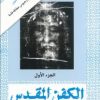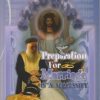The Liturgical Worship in the Coptic Church
THE WORD “LITURGY”
The word “Liturgy” in classic Greek means “a public service undertaken on behalf of the people” it comes from:
- “Liaw,” meaning “People.”
- “Ergia,” meaning “work.”
When the Word of God was incarnate and became man, He submitted to the Law and attended and celebrated the feasts. However, He diverted the attention from the symbol to reality, and from the outward appearances to the inner depths (John 2, 5, 6, 7, 12); to grant the joy of the feast through practicing the secret communion with God and receiving His redeeming deeds.
Almost all the days are feasts to the Coptic Church. Although she is known for bearing the cross, she is eager to have her children live, in the midst of sufferings in spiritual gladness. She is capable, by the Lord’s help, to raise them above tribulations. In other words, the Coptic Church is continuously suffering and joyful at the same time, her feasts are uninterrupted, and her hymns with a variety of melodies are unceasing.
LITURGICAL WORSHIP AND LITURGICAL LIFE
Liturgy does not mean some hours spent by believers – clergymen and laity – in participating in the Eucharistic liturgy, performing on vesper or matin or baptism or marriage celebrations etc., but it is in its essence the true communion with Christ. This liturgical life is not lived only when a believer participates in common worship whatever it is, but it dwells within his heart even when he is alone in his room. In other words “liturgy” is a life which the church practices, through which she acknowledges her nature, realizes her message and attains her own existence which is life and growth in Jesus Christ.
In fact, we use the word “liturgy” for common worship, because the believer participates in this worship with the members of the community. This membership is alive and active and it represents a part of his entity. He is a member even when he is alone speaking with God in his own room. The holy community is in the heart of the real believer, and the believer is within the heart of the church community. In other words, when a believer prays in his room, he realizes that all the church is within his heart, praying in her name, calling God: “Our Father” and not my Father who art in heaven.” At the same time, when the community prays it endows its members, present and absent with love.
THE CHARACTERISTICS OF THE COPTIC LITURGIES
- The Coptic liturgies are known to be not monopolized by clergymen. They are the liturgies of all the church, laymen and clergymen. The people participate in the hymns, and prayers. Therefore clergymen should pray in the language of the people, clearly and with a pleasant tone, as the people take their turn in participating. Here the “people” means all the congregation: men, women and children. The Coptic Church does not exclude children during the liturgy, and this is one of the resources of our church in Egypt, for even the child feels his positive membership and acknowledges his right in participating in church liturgies. The beautiful rites and heavenly hymns encourage children in worship without feeling bored, In spite of the lengthy services.
- The Coptic liturgies not only emphasize church unity, clergy and laity, young and old, men and women, but also aim at revealing that the heavenly life is near and realizable to us! All the Coptic liturgies have eschatological (heavenly) attitude. In the liturgies the church participates in the hymns of the heavenly creatures, its thoughts are attracted to acknowledge the hidden mysteries of heaven. For example, the liturgy of marriage attracts our thoughts to the heavenly marriage of our souls to Christ, and also to the crowns of the saints.
- The Coptic liturgies are correlated to the church dogmas and doctrines. Liturgies’ rites and texts instruct even children in simple ways about Church faith, her concepts and dogmas concerning:God; our relation with Him; our relation with the heavenly hosts and saints; our view of sanctity, of the world and our bodies, our struggles against the devil and his agent etc. Liturgies represent a school to the people, opening its doors to the children through its simplicity, and to the theologians through its depth.Coptic liturgies clarify church dogmas without the need of any theological discussions, and at the same time gives genuine theological concepts that believers experience during their worship.
- Coptic liturgies are correlated to the ascetic church life. Asceticism has its effect on our liturgies, as it appears in the long duration of the services and practicing kneeling during the services. Liturgies soothe and delight the ascetic person. For example, in the service of the Holy Week and Good Friday, although the believers fast for long periods and abstain from many kinds of food, they feel true consolation, which they rarely attain in other occasions during the year. The daily Eucharistic liturgies in Lent season grant the believers spiritual delight of particular character.
- Coptic liturgies are biblical. Every liturgy declares the word of God and the experience of the evangelic life. They include readings from the Holy Bible, the Old and New Testaments, especially the book of Psalms, Epistles of St. Paul, the Catholic Epistles, and the Gospels. They also present prayers and hymns quoted from the Bible, carrying evangelic thoughts. Thus we can say that liturgies are totally presented in the spirit of the Bible.
- Coptic liturgies touch the believers’ daily life and also their family life, for they are the “dynamic energy” which moves their lives. There is no separation between common worship and actual life. In other words, believers practice the common worship as a part of their lives as a whole.To explain the correlation between the liturgical life of common worship and the daily life for Copts, we here give some examples:
- The priest and the laity acknowledge the liturgy of Eucharist as a meeting at the Cross of our Lord Jesus Christ, and as an entrance to Golgotha, so that they all might sit under the Cross’ shadow (Cant. 2:3). The priest puts his hand on the “Lamb” (Holy Bread) and prays for his family, his spiritual children and for all the people. He prays for the repentance of those who stray away and for the solution to church problems and family disputes, and for those who are in trouble that God may intervene through His Divine grace. He also prays for those who are traveling, for the sick and for those who departed in the Lord etc.The Coptic people used to ask the priest to remember them and their problems on the attar of the Lord and they themselves participate with him in asking God. Thus, Copts find their comfort in the liturgy -of the Eucharist, as they find the precious Blood of Jesus Christ as the propitiation of their sins (I John 4: 10), and a source of their inner peace.
- Through the various liturgies believers acknowledge the motherhood of the church and the fatherhood of the priest as a figure and shadow of God’s Fatherhood. Therefore, Copts flee to the church as their own refuge in the important and trifle matters, in sadness and in their happiness, because of their trust in her and their love for her. For Example, when God grants a family a baby, the church prays a special “liturgy” for washing the babe on the eighth day of his birth. The priest, deacons, the family and their friends participate in giving thanks and praise to God, asking Him to act in the baby that he might grow in the &race of God as a saintly member of the church. When a person succeeds in any work usually he asks for giving thanks to God by praying a special doxology through or after the Eucharistic liturgy. When a person falls ill he asks for praying the liturgy of the unction. When a person dies the church prays the funeral service, on the third day prays a common prayer at his house to declare God’s consolation through the resurrection of Christ on the third day, and in every memory the priest mentions the name of the dead person in Eucharistic liturgy (the diptych).
Thus, the church does not interfere in the lives of her children but through love, participates in all their aftirs, that they might feel her motherhood and her sharing in their feelings.




